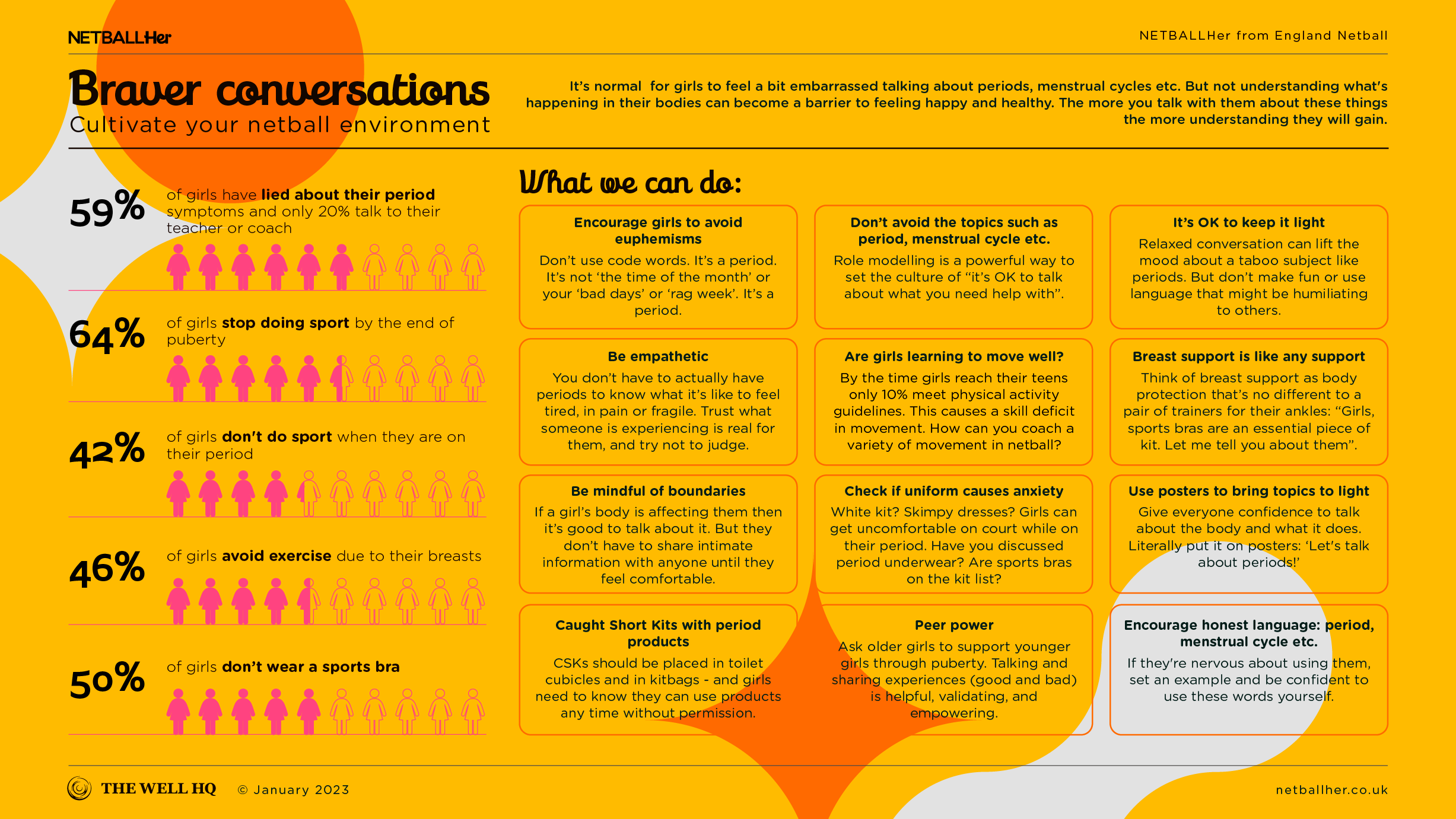Click play for an audio readthrough of this article
It’s getting more (not less) problematic and the response may lie in reimagining the gymspace
By now you probably know that 65% of girls drop sport like a hot rock by the time they’re through puberty. This is double the rate of boys and made even more depressing in the fact that most of the one in three girls who remain in sport don’t meet minimum fitness standards.
But this stat covers the general population. Not everyone was into sport before puberty and not everyone will be into it after; as it becomes less mandatory.
So maybe it’s not so bad. People like different things, after all.
Makes sense. But an eye-opening, excellent Women in Sport survey determined that the dropout rate among girls who love(d) sport bears a depressing resemblance to the general data.
Some 43% of girls, once very active, will also check out of sport at some point in their teens and most won’t ever make it back …
What changes?
Obviously we know that girls themselves change, physically, socially and emotionally. But so too do boys and they don’t drop out in the same numbers.
What the Women in Sport survey revealed was that the things sport is (and isn’t) start to become apparent to girls when they come of age, and that packs a punch in participation.
For example, the older one gets the more sport is loaded with expectation, intensity and competition. And while developing boys seem to embrace these things, girls in general do not. On the contrary, as sport ramps up in intensity girls are likely to see it as a breeding ground for their fears, social anxieties, wavering confidence and body image issues.
That last one is huge. Nearly three in four (73%) girls interviewed for the Women in Sport study said they don’t like being watched when playing sports, and more than half said they felt they had the wrong body shape.
Then there’s periods. The same study found that three-quarters of girls said they avoided sport when on their period, leading Alison Oliver, CEO of Youth Sport Trust, to state that periods are a bigger barrier (not a smaller one) to sport today than they were even three years ago.
Exhibit A
This survey is almost exhibit A in why we need change. Various initiatives stretching back decades have tried to fit girls into sport when, really, time and resource would be better spent trying to fit sport to girls.
And we hear you – that’s easy to write but harder to do.
Still, 64% and 43% dropout. We have to get the ball rolling, don’t we?
Reimagining the gym hall
A first step is to swallow the fact: sport doesn’t meet girls’ needs. From there, we almost certainly have to reframe it. Expectations, intensity and competition don’t appeal, so we need to infuse sport and exercise with a purpose that does appeal.
We know girls are interested in overall health and wellbeing, so that seems the most logical place to start. So let’s imagine what’d happen if we rebrand what physical activity is and does along health and wellbeing lines. Surely that’d open up opportunities to engage across the spectrum.
Let’s say PE isn’t presented as training for an end-goal but as a vehicle to nurture a rounded sense of wellbeing. With that, teenage girls’ emotional needs – as well as their physical – fit more easily into the paradigm.
From there the gym hall might double as the space to talk about wellness. About food and nutrition. About social media. About confidence and self-worth. What if PE was the place to celebrate bodies – what they do and how they move. What if the gym hall was the setting for lessons in puberty, pelvic floors and the menstrual cycle?
As it is, there’s no forum for these things beyond a biology lesson or two …
What better setting to inform girls how beneficial exercise can be for moods, sleep, period pains, self-confidence and resilience? Framed this way, PE and sport – and environments like the netball court – could grow into non-judgemental platforms which help girls to find their voice, their confidence, themselves.
It’d do a whopping trade in taboo-smashing.
The practical
Maybe the above is pipedream stuff, but if even a few of the measures above were implemented it’d be a no brainer to usher in practical changes too.
Part of the wider problem is that sport by default isn’t massively practical for girls. This we know. Girls have to learn to deal with ill-fitting kit, bodyparts that swing and bounce, periods and managing them. This is all made harder by the fact that, by default, the right products and facilities aren’t always available or even known about.
So in a space where those things are freely talked about, it’d surely be a matter of time before Caught Short Kits were in bathrooms and bags. Before period pants were must-haves. Before PE was the forum to talk about, sample, try and buy sports bras. Maybe they’d soon be in every locker.
It’s not an either / or
A majority of interviewees in the Women in Sport study said they dropped out because academia was now the priority and sport had to take a back seat.
But we all know there can (and should) be space for both. Gartner research identified five pillars of overall wellbeing: physical, social, financial, community and career. As it is, sport and PE are primarily framed as the physical, but a move to the left and we could make space to nurture the physical, the social and the community.
Career, too, perhaps. Given the pressures of academia, where better than the gym hall or the netball court to de-stress? It’s peas and carrots. Studies consistently show that physical exercise boosts academic performance. One needs the other.
Even simpler than that, we can’t expect the dropout stats to thin out if sport and academia is an either / or choice. They complement each other, they always have.
A final thought
There’s work to do and, as the old sayings go: be the change. A journey of 1,000 miles begins with the first step. If you don’t do it, who will?
Her future is at stake. And with a relatively simple reframing of what sport is and does places such as the netball court could become nurturing second classrooms. Environments that keep girls safe, included, informed, empowered and involved through the perilous dropout years.
In netball we have an opportunity. We can add new dimensions to her education, her wellbeing, her mind and her body. We can help get her ready for the chapters ahead.
As a reminder, the content of the course belongs to The Well HQ. You have permission to access and use the content yourself or, if you are an organisation, for the number of users selected, but are not otherwise permitted to share such content with others, all in accordance with our Course Terms and Conditions.

